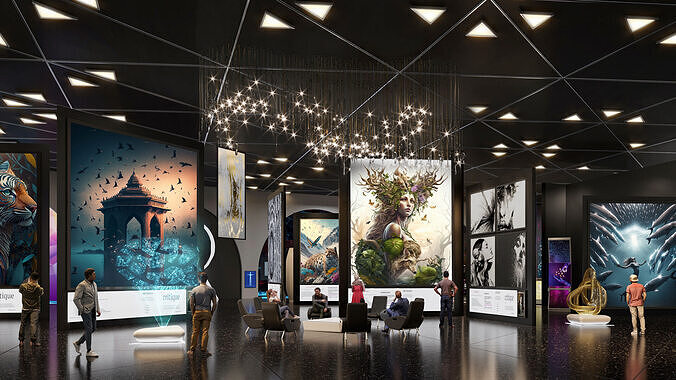
Art Gallery 3D model
This art gallery is a space or venue dedicated to the exhibition, collection, and promotion of visual art. Art galleries can vary in size and focus—some may showcase the works of a single artist, while others feature a diverse range of artists and styles.
Key Elements of an Art Gallery:Exhibition Space: This is the main area where artworks are displayed. It can include walls for paintings, platforms for sculptures, and areas for multimedia installations.
Curatorial Vision: Many galleries are guided by a curatorial vision, which influences the selection of artworks and the theme of exhibitions. Curators play a significant role in managing exhibitions, from planning to installation.
Artist Representation: Some galleries represent artists, helping them sell their works and promoting them through exhibitions and events.
Community Engagement: Galleries often serve as cultural hubs, hosting events, workshops, and discussions to engage the community and foster appreciation for art.
Sales and Collections: Many galleries sell artworks, acting as intermediaries between artists and collectors. They might also curate collections that can be loaned to museums or other institutions.
Diversity of Media: Art galleries can include a variety of artistic media, such as painting, sculpture, photography, installations, and digital art.
Accessibility: Some galleries focus on making art accessible to the public, including free exhibitions, educational programs, and outreach initiatives.









